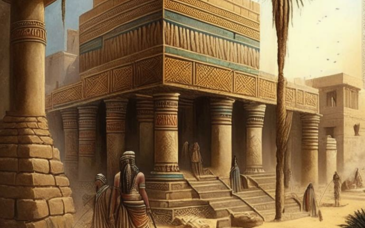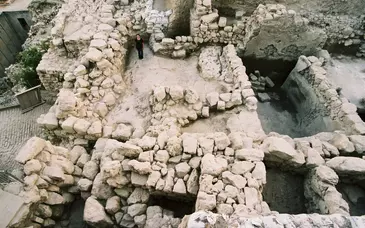Beneath the bustling streets of Rome lies a hidden world, a maze of subterranean passages adorned with echoes of early Christianity. The Christian Catacombs of Rome, a network of underground burial sites, serve as silent witnesses to the faith, perseverance, and intricate rituals of the early Christian communities. Join us as we journey into this sacred underworld to explore the fascinating history and significance of the Christian Catacombs.
1. Origins and Purpose: The Christian Catacombs originated in the 2nd century AD as a response to the growing Christian community's need for burial spaces. Initially serving as simple repositories for the deceased, these underground complexes evolved into intricate networks of tunnels and chambers adorned with religious symbols, frescoes, and inscriptions.
2. Symbols and Iconography: The catacombs are adorned with a rich tapestry of symbols that convey profound religious meanings. Fish, anchors, and chi-rho symbols, among others, reflect the early Christians' desire to express their faith in a clandestine environment. These visual narratives served as both markers of identity and expressions of hope in the face of persecution.
3. Rituals and Practices: The catacombs were not only burial grounds but also spaces for communal worship and commemoration. Early Christians gathered for funerary banquets, celebrated the Eucharist, and painted vivid frescoes depicting scenes from the Old and New Testaments. The catacombs thus became a nexus of spiritual life and a testament to the resilience of the Christian community.
4. Catacombs of San Callisto: One of the most renowned catacombs is San Callisto (Callixtus), named after Pope Callixtus I. It is the largest and most important of the Roman catacombs, containing the tombs of numerous early Christians, including popes and martyrs. The intricate corridors and chapels showcase the evolving artistic styles and religious practices of the time.
5. Persecution and Sanctuaries: The catacombs served as sanctuaries during periods of persecution. Hidden from the eyes of authorities, early Christians found solace and a sense of community in these underground spaces. The catacombs became a refuge for preserving Christian traditions and teachings during challenging times.
6. Rediscovery and Preservation: Over the centuries, the catacombs fell into obscurity and were largely forgotten. It wasn't until the Renaissance that interest in these underground marvels was rekindled. Today, efforts in preservation and restoration allow visitors to explore the intricate labyrinth of chambers, gaining insights into the early Christian experience.
7. Spiritual Pilgrimage: Visiting the Christian Catacombs of Rome is a spiritual pilgrimage for many. As visitors descend into the depths, they are transported to a time when Christianity was in its infancy, facing adversity yet flourishing in the shadows. The catacombs serve as a poignant reminder of the roots of the Christian faith.
The Christian Catacombs of Rome stand as a testament to the endurance of faith and the indomitable spirit of early Christians. Beneath the storied streets of Rome, these subterranean galleries offer a profound glimpse into a chapter of history where belief and community flourished in the face of challenges. Exploring the Christian Catacombs is not just a journey through time; it is a pilgrimage to the roots of a faith that would eventually shape the course of history.
















